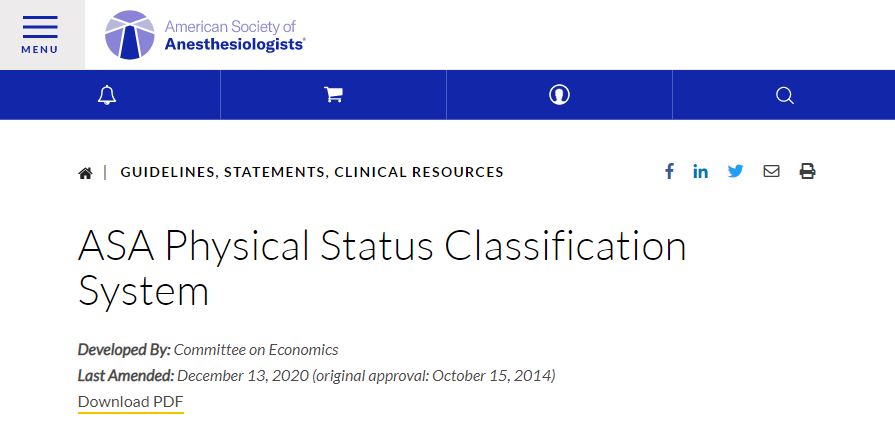Developed By: Committee on Economics
Last Amended: December 13, 2020 (original approval: October 15, 2014)
Sistema de clasificacion del estado físico de la Sociedad Americana de Anestesiólogos
The ASA Physical Status Classification System has been in use for over 60 years. The purpose of the system is to assess and communicate a patient’s pre-anesthesia medical co-morbidities. The classification system alone does not predict the perioperative risks, but used with other factors (eg, type of surgery, frailty, level of deconditioning), it can be helpful in predicting perioperative risks.
The definitions and examples shown in the table below are guidelines for the clinician. To improve communication and assessments at a specific institution, anesthesiology departments may choose to develop institutional-specific examples to supplement the ASA-approved examples.
Assigning a Physical Status classification level is a clinical decision based on multiple factors. While the Physical Status classification may initially be determined at various times during the preoperative assessment of the patient, the final assignment of Physical Status classification is made on the day of anesthesia care by the anesthesiologist after evaluating the patient.
Current Definitions and ASA-Approved Examples

